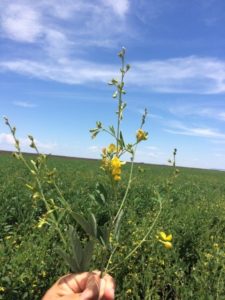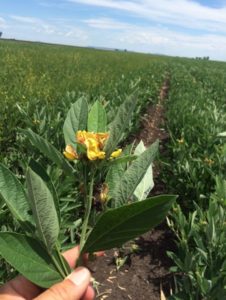Pigeon peas represent about 80% of the refuges cultivated to offset Bollgard cotton in Australia due to the land area use efficiency of this option.
However, over the years, varietal mixing and continual recycling of seed from undamaged refuges has resulted in peas that flower later in the season, increasingly lacking synchrony with Bollgard’s boll setting period, thus reducing the overall effectiveness of this refuge option. Seed quality and availability is also a frequently encountered problem for growers.
With the commencement of the Bollgard 3 era, our dependence on Bt technology is likely to continue for the foreseeable future, and the cotton industry cannot continue to rely on randomly saved pigeon pea seed, especially as a reduction in the mandated refuge area means that refuges must be effective and well managed.
With no commercial quantities of pure lines available in Australia for variety renewal, Dr Paul Grundy of the Queensland Department of Agriculture and Fisheries (DAF) conducted research to identify a new cultivar suitable for use in refuges. Over two seasons of small plot trials, 330 lines of seed stored in Australia’s Genetic Resource Centre (AGRC) were assessed.
The most useful phenotypes were indeterminate and produced copious quantities of flowers and pods on large racemes. A foundation quantity of seed was subsequently developed and commercial seed production of the new variety, named Sunrise™, is currently being undertaken by Associated Grains, in Dalby, Queensland, with release planned for 2017.
Sunrise™ has exhibited excellent vigour under furrow irrigation on a range of soil types, commences flowering prior to January, and has a strongly indeterminate growth habit that allows for repeat flowering, particularly after sustaining insect attack.
As part of the Bollgard 3 Resistance Management Plan (RMP) development process, Monsanto are working with the industry on improving refuge quality, by working with Associated Grains and supporting work in partnership with DAF, to collect additional data for the refuge efficacy of Sunrise™ compared with existing pigeon pea refuges – information that will be critical for future resistance management planning though the Transgenic and Insect Management Strategies (TIMS) Committee.
Limited quantities of seed have been released this season for planting at a range of locations throughout the industry so that growers will be able to have a first-hand look at this variety in their region at field days planned during January and February.
Extract of an article by Paul Grundy and Yash Chauhan (Queensland Department of Agriculture and Fisheries), and Kristen Knight (Monsanto) published in the Australian Cotton Grower (December 2016/January 2017, pages 22-24).


